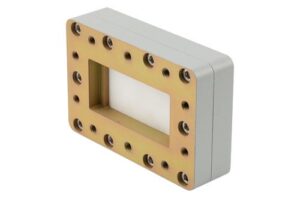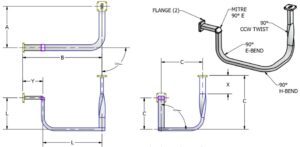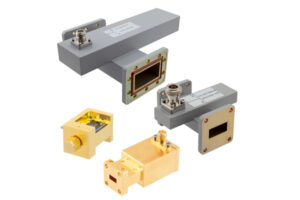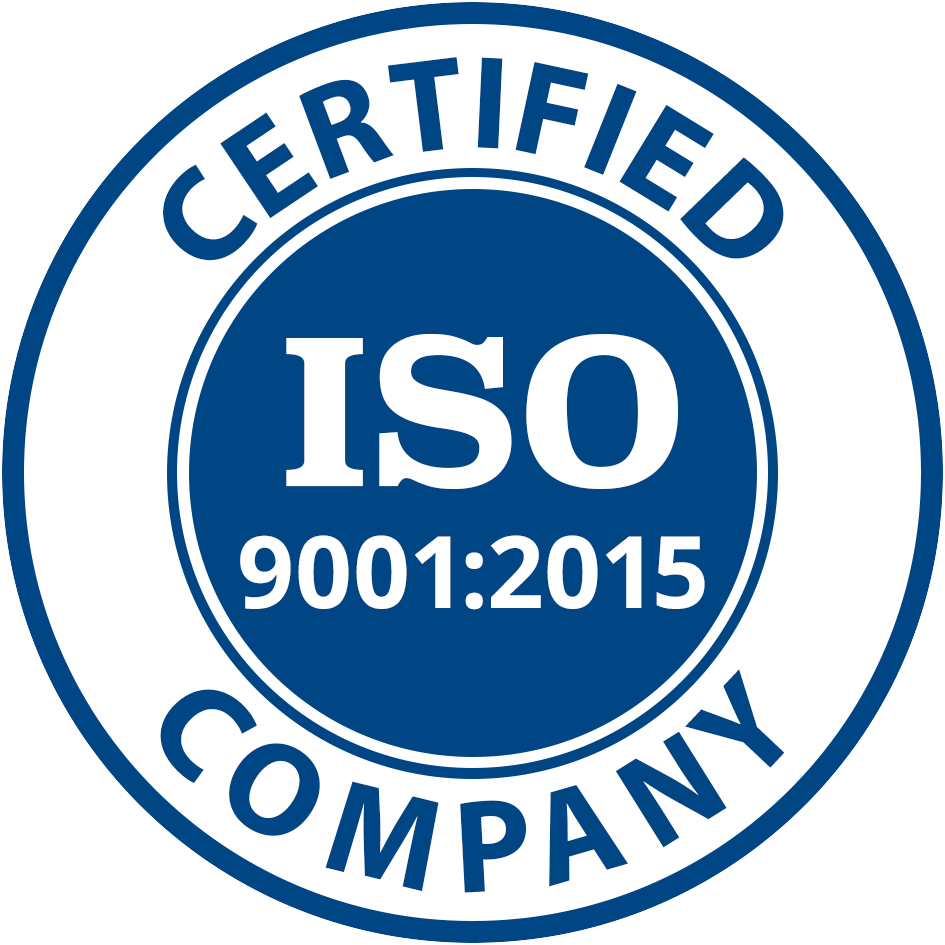Phased array antennas enhance satellite efficiency with over 80% bandwidth utilization, 3x frequency reuse, and 90% lower maintenance costs. They provide flexible, reliable connectivity for remote areas and moving vessels, supporting scalable SATCOM across commercial, public, and private sectors.
Flexible Satellite Connectivity
According to industry data, among the more than 4,000 satellites in orbit around the world, nearly 65% of satellite communication systems rely on fixed antennas, and the bandwidth utilization of these traditional systems is only between 40% and 50%. For satellites using array antennas, the bandwidth utilization can be increased to more than 80%. Take SpaceX’s “Starlink” project as an example. The project has deployed more than 5,000 small satellites, each equipped with advanced phased array antennas that can quickly switch signal coverage areas within 10 milliseconds.
After using array antennas, some commercial communication satellites have increased their frequency reuse efficiency by 3 times, from supporting 50 users per 1MHz bandwidth to 150 users. The 2020 Australian bushfire disaster destroyed more than 500 communication base stations and more than 100,000 households lost communication. Through phased array technology, signals can be encrypted and redistributed for specific areas within 5 seconds.
The maintenance cost of the steering system of a traditional mechanical antenna can be as high as $500,000 per satellite per year. The maintenance cost of the electronic beam steering technology of the array antenna is reduced to less than $50,000 per year. The life of a traditional satellite is usually between 12-15 years, while satellites using array antenna technology can extend their service life to more than 20 years through remote software upgrades. Assuming that the initial investment of a satellite is $200 million, after the life is extended by 5 years, the average annual cost is reduced by 20%.
According to market analysis reports, it is expected that by 2030, 85% of the satellites deployed worldwide will use array antenna technology. The “EU Satellite Communications Program” is expected to invest 6 billion euros in the next 5 years. Amazon’s Kuiper project also announced that it will equip the 3,236 satellites it plans to launch with advanced array antennas.
Reliable Remote Coverage
The construction cost of each base station is usually between $150,000 and $300,000. Satellites with array antenna technology can achieve coverage of these areas within 1 day. Certain high-demand areas can obtain high-speed networks of 2Gbps, while sparsely populated areas remain at a basic speed of 100Mbps. Through dynamic adjustment, the coverage of each small beam can be controlled within a radius of 100 kilometers.
Indonesia has more than 17,000 islands, and the construction cycle takes 3-5 years to complete. Using the satellite communication system with array antennas, the Indonesian government achieved network coverage of 95% of remote islands within 1 year, providing Internet access services to more than 12 million people. More than $200 million in infrastructure maintenance costs are saved each year.
In an extreme climate environment, the signal loss rate of the array antenna is only 0.05%, while the loss rate of the traditional antenna system is as high as 2.5%. The communication system using array antennas can also maintain 99.95% communication reliability under severe weather conditions.
A satellite using array antenna technology can achieve a maximum communication capacity of 1.2Tbps, which is more than 200% higher than traditional antenna systems. Global Internet traffic increased by 70% during the global epidemic.
About 65% of the world’s oil and gas resources are located in remote areas. The maintenance cost of traditional ground communication equipment is as high as more than $500,000 per year. The communication system of satellite array antennas can reduce the failure rate by 70%. After deploying the array antenna satellite system, more than $1.5 million in operating expenses were saved each year, while the data transmission delay was reduced from 500 milliseconds to 30 milliseconds.
The manufacturing cost of a satellite equipped with an array antenna is about $300 million, which is a 30% increase in initial investment compared to traditional satellites. The service life is usually 20 years, while the service life of traditional satellites is only 12-15 years. Array antennas can help operators recover their initial investment within 5 years and achieve a return on investment of more than 400% in the next 15 years.
Mobile SATCOM Solutions
More than 90% of global international trade is carried out by sea. Large mechanical antennas take 30 seconds to 1 minute to adjust the antenna direction each time. The mobile satellite communication system with array antennas completes signal lock and direction adjustment in less than 1 second. The mobile SATCOM solution enables each ship to achieve 99.8% communication coverage and reduces data transmission latency to less than 50 milliseconds.
More than 100,000 flights are operated in the air every day around the world, and airborne Internet connectivity has become an important part of the passenger experience. Traditional ground base station signals can only cover areas below 10,000 meters in altitude. The mobile SATCOM system with array antennas allows aircraft to increase network connection speeds to 100Mbps at cruising altitude, far higher than the 20Mbps of traditional systems.
The average failure rate of military communication systems in the past 10 years was 15%, but after adopting the mobile satellite communication system with array antennas, this failure rate has dropped to less than 3%. The mobile SATCOM system was tested in a military exercise in 2023, achieving real-time video transmission and data encryption communication 300 kilometers away.
More than 600 million people in Africa live in areas lacking ground communication infrastructure. The average construction cost of traditional communication base stations is $200,000 per base station, while the cost of mobile SATCOM solutions is only $10 per user per month. An Internet service based on mobile satellite communications is expected to cover more than 100 million users in the next 5 years.
Advantages of mobile SATCOM systems, using Ka band or Ku band, with a frequency range of 12GHz to 40GHz. Array antennas can form more than 32 independent beams at the same time, and the coverage area of each beam can be precisely controlled within a radius of 50 kilometers. The data transmission speed of the mobile SATCOM system can reach 1Gbps. The size of the array antenna is usually between 30-60 cm.
Support for Moving Vessels
The global shipping industry transports more than 11 billion tons of cargo each year. Traditional mechanical antennas have a signal interruption rate of up to 15% when the wave height exceeds 4 meters, while the ship communication system using array antennas has a signal interruption rate of only 1.2% under the same conditions.
For example, during the rapid movement of rescue ships or naval vessels, the ship speed can reach more than 30 knots (about 56 kilometers per hour). Using the array antenna system, communication with the ground command center was successfully maintained at a speed of more than 35 knots, and video data up to 50Mbps was transmitted in real time.
More than 120,000 flights are operated in the air every day. The Ka-band array antenna system can achieve a network connection speed of up to 100Mbps, shortening the interruption of 3-5 minutes per hour of the traditional system to less than 10 seconds per hour. The mobile communication system of the array antenna reduces the signal loss rate of the self-driving mining truck within the coverage area by 90%, while reducing the communication delay from 500 milliseconds to 50 milliseconds.
Traditional antennas may cause up to 50% data packet loss when encountering weather. The satellite communication system of the array antenna can still maintain 99.7% communication stability even in an extreme environment of minus 40℃.
The mobile satellite communication system of the array antenna costs about $300,000 to $500,000 per system. The average annual maintenance cost of the traditional antenna system is $50,000 to $100,000, while the maintenance cost of the array antenna is less than $10,000, and the service life can usually reach 15 to 20 years.
Public and Private SATCOM
The WGS system consists of 10 satellites, covering more than 95% of the world’s geographical area, and each satellite has a transmission capacity of up to 3.6Gbps. Phased array antenna technology can reallocate communication beams in less than 1 second.
The total construction cost of the WGS system exceeds $3 billion, and the annual maintenance cost is as high as $200 million. Take Inmarsat as an example, it provides mobile broadband services covering the world, with an annual contract fee of about $50 million. SpaceX’s “Starlink” project deploys more than 5,000 low-orbit satellites. At present, the number of Starlink users has exceeded 2 million, and its coverage includes more than 40 countries and regions around the world.
Traditional geostationary orbit (GEO) satellite communication systems usually take 2-3 years to complete, while the manufacturing time of low-orbit satellites is less than 6 months. The launch cost has dropped from $300 million per satellite to less than $10 million.
Scalable Communication Networks
According to the International Telecommunication Union (ITU), by 2025, the number of Internet users worldwide is expected to reach 6.6 billion, an increase of 28% from 2020. Compared with traditional networks, Starlink’s expansion speed has increased by more than 70%.
Data shows that Amazon’s satellite network expansion strategy has increased its data transmission efficiency by 45% and reduced network maintenance costs by 30%. In the 2023 Turkey earthquake, the ground communication network was almost completely interrupted within 30 minutes after the earthquake. In just 2 hours, the emergency satellite communication system deployed with array antennas covered the disaster area and provided data transmission speeds of up to 100Mbps. The system can simultaneously support the voice, data, and video communication needs of more than 5,000 rescue workers.
The number of connected devices in the world is growing at a rate of 20% per year and is expected to reach 250 billion by 2030. OneWeb’s low-orbit satellite network can support the connection of more than 1 million IoT devices at the same time, with an average latency of less than 50 milliseconds per device. After deploying a scalable satellite network, a European communications operator increased network resource utilization from 60% to 85%, reducing annual operating costs by 15 million euros.
Emerging Commercial Use
According to market research firm Statista, the number of IoT devices worldwide is expected to reach 250 billion by 2030. By introducing satellite IoT technology, farm irrigation efficiency can be increased by 40% and fertilizer use can be reduced by 30%.
According to the International Air Transport Association (IATA), more than 100,000 flights are operated in the air every day around the world. Gogo’s latest in-flight Internet system supports up to 100Mbps bandwidth per flight and can provide high-speed network services to 200 passengers at the same time. According to the World Health Organization (WHO), about 2.6 billion people in the world lack basic medical services, and telemedicine technology can help reduce medical visit time by 30%-40%. The patient’s treatment waiting time is shortened from the traditional 7 days to 2 hours, and the success rate of patient treatment is increased by 70%.
Data shows that the introduction of the system has increased UPS’s drone logistics efficiency by 35%, saving more than $20 million in operating costs each year. Traditional ground communication networks usually have a delay of 100-200 milliseconds when transmitting data across continents. The use of low-orbit satellite networks can reduce data transmission delays to less than 20 milliseconds. By introducing satellite communication networks, these companies have increased their annual average revenue in high-frequency trading by 8%, equivalent to an increase of more than $500 million in profits each year.
Satellite communication systems have increased the tracking accuracy of goods to 99.9% and reduced the loss rate of goods by 20%. The size of the global satellite communication market is expected to grow to $750 billion by 2030, of which emerging commercial applications will account for more than 45%.









